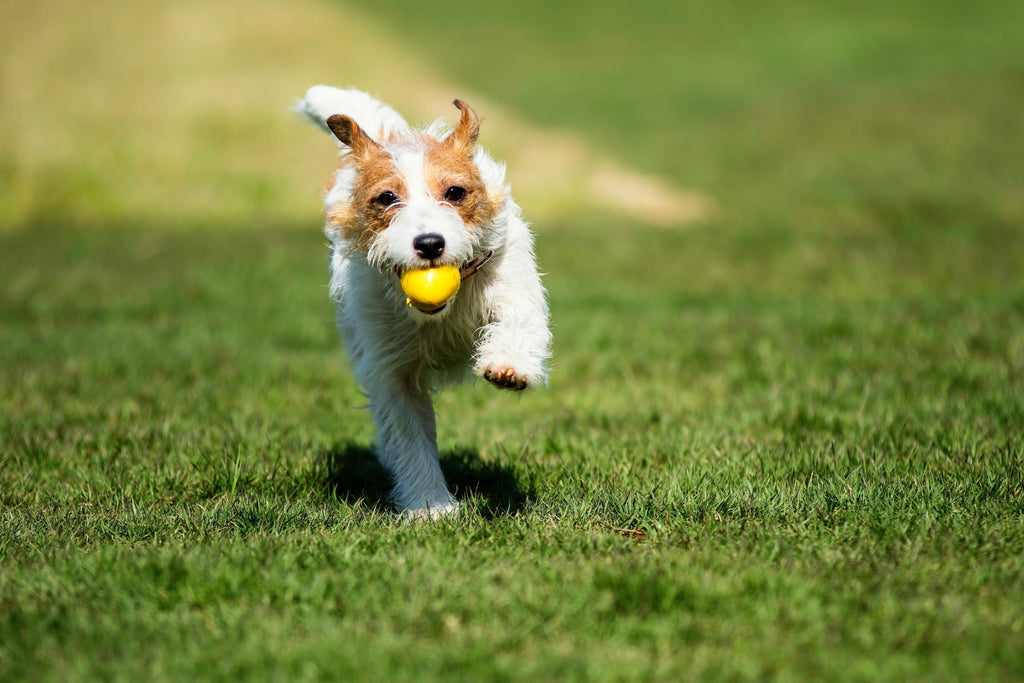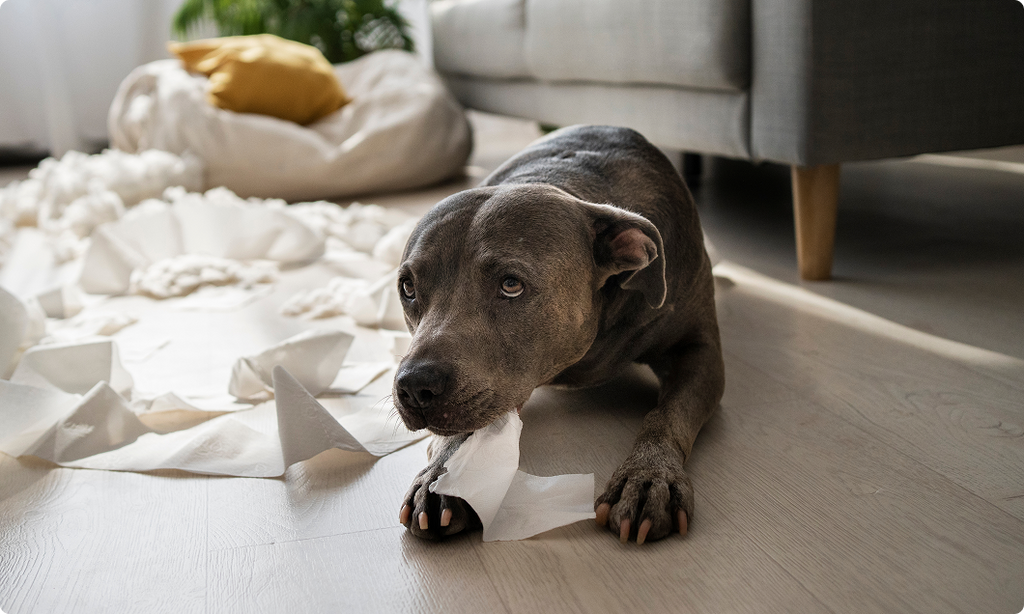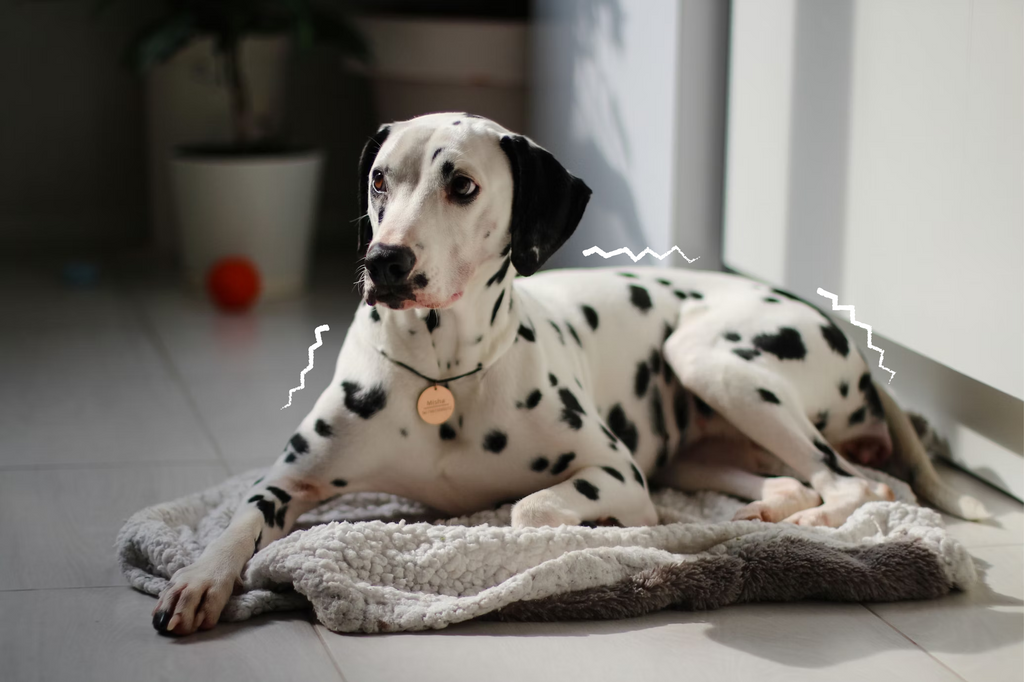Signs Your Dog Needs Professional Training AKA “K9 Training”

Your new best friend has been home for a few weeks and well… things could be going better. Don't panic. It's totally normal for dogs to go through some rough patches. The reality is you love your dog, but you worry about the future of how well they will adjust to life in your companionship and begin listening to commands. If you're stressed out about too much barking, uncontrolled behaviour, and a lack of following commands, it may be time to take your dog to school. This article will help decide if K9 training should be a high priority for you and your pup.
Signs to look for in dogs in-need of professional K9 training
All dogs are different, and their behaviour varies depending on where they are and who is around. But there are some signs that you can look for that signal you need a little help. These signs include:
- Aggression
- Excessive barking
- Food aggression
- Jumping up on people
- Ignoring your commands
- Leash pulling
- Nipping your hand
- Running away
- Separation anxiety
- Tail chasing
If you notice several of these, don’t despair, help is available!
Analyzing your dog's training-readiness

When you dearly love your dog, it's easy to overlook those minor character flaws. It's also easy to write-off real issues. However, if you don't help your dog learn what behaviors are appropriate and which can be dangerous, more than likely they will get worse over time.
When you're proactive and treat the negative behaviours before they go too far, you and your dog both benefit.
Consider your role as a dog pawrent
Look back at the process of finding and giving a home to your dog, then ask yourself if the behaviour is something that would have prevented you from adopting that dog in the first place. If the answer is “No,” then it probably is something minor, and you can either work to correct the behaviour or if it is very minor, just live with it.
How bad is your dog's behaviour?
Dogs are like people, everyone has little idiosyncrasies that we might not like, but we learn to put up with them because they are more important than their little oddities. When it comes to deciding on the type of training and urgency of your dog's training, you must determine how "bad" or dangerous your dog's negative behaviour actually is. This means taking an honest, object look at your dog's less-than-great habits.
Bad Behaviour Inventory
We recommend taking an inventory of the issues and giving them a rating of 1 to 3 in severity (3 being the most severe). After completing your inventory, add up your dog's scores and divide by the how many item you have on the list. If that average is greater than 1.5, it's time for training!
What should you include? Any behaviour that's worrisome. Here are some examples:
Occasionally jumping up to greet someone isn’t great, but, unless it happens with everyone that enters your home and continues till they leave. However, if your dog jumps up on a child or vulnerable adult, the occasional jump could result in injury. If you rarely have house guests, jumping might be something that you can live with.
A dog that mouths hands while playing can be harmless. But if they apply too much pressure, that mouthing can become harmful.
Other behaviours include:
- Lead-pulling
- Growling
- Rough play with other dogs
- Eating non-food items
- Destructive actions
- Rough play with children
- Little to no recall
- Digging under the fence
- Toy possessiveness
- Food or treat guarding
Can I correct the behaviour?
Ask yourself if you can correct the behaviour on your own. If your forever friend likes to play with and chew on your shoes, you can just make sure that your pooch can’t get to them. You can also use a determent spray that gives tempting items a foul scent that your dog doesn’t like to take away some of the appeal that they might have.
Whatever the problem, if you feel confident in your ability to change the actions of your dog, go for it. If not, it is wise to get additional help from someone with training in this area.
Should I get professional help?
If your dog is doing things that really concern you, and you feel unable to address it, then it is time to get some professional help. Don’t feel bad, many puppy parents have little or no training, and a little time spent with a trainer will accomplish more than weeks and months of doing it yourself.
Experience trainers have probably encountered dogs like yours many times and have a whole arsenal of tools that they can use to help with the problem. So don’t despair, there is hope left for the most incorrigible dogs.
Deciding what to do with a dog in-need of training

Decide whether a group class or private lessons fit your situation and you and your dog’s personalities. Then ask people like your vet, the breeder that you got your dog from, staff at the animal shelter, or the staff at your local pet store trainers that they might recommend.
What are your dog training options?
Luckily, there are a wide array of avenues for dogs in-need of training. These can range in price and availability. Before deciding on which option is best for your dog, consider your budget, schedule, and dog's needs. Never hesitate to ask a training facility or trainer for their prices as well as what their scheduling optionss are.
Class for you and your dog
Before your classes start, try to socialise your dog first. Meeting new dogs and people before classes start will help them to focus more on the training than the other dogs and dog parents.
Then, take your dog to the vet and make sure they are healthy and up to date on vaccinations. Some health issues can cause your dog to misbehave, and in most cases, you will need to be up to date on vaccinations in order to start group classes.
In most cases, it is a good idea to sign up for obedience classes even if your dog doesn't have any issues. It will help you to get to know your dog and your dog to get to know you. It will strengthen the bond between you, and you will learn to trust your dog around other dogs and people, and most importantly, it will teach your dog to trust you.
For a class, you will also need a:
- Durable Collar
- Leash
- Treats
- Treat bag
- A clicker (possibly)
- A muzzle (possibly)
Classes with other dogs will help your dog to socialise, and they will be better at following commands outside of class when there are distractions–and while walking them or letting them loose at the doggy park, you can bet there will be distractions.
At these classes, the skills you can expect to work on at a basic level are:
- Name Recognition
- Come
- Sit
- Down
- Stay
- Leave it or Drop
- Heel
- Polite greetings
- Leash walking
As you live with your dog, and especially go places with them, you will be happy that they have mastered these.
A dog trainer that comes to your home
If your dog is unable to focus around other dogs, group classes might not be the best choice. For the dogs that tend to be hyper and lack focus, you might want to have a class with just you and the trainer.
Bringing a trainer to your home is better for shy dogs or dogs that are easily distracted. The trainer will teach your doggo proper behaviour as well as treat possible underlying problems that might be a cause for those behaviours.
The trainer will teach you as much as they teach your dog. You will learn to read your dog’s body language, and your dog will learn to listen to you and your commands. Note what the trainer is doing and try to do the same things and the same ways. You will probably want to take notes so that you don’t forget anything, then refer to the notes when you are with your dog after the trainer departs.
Dog Training: Keeping Your Best Friend on Their Best Behaviour

Everyone wants a forever friend that is the very model of canine etiquette. But that rarely happens in the real world. Very few dogs have behavioural issues that can be resolved or at least lessened so that they are not major problems. And all dogs can use some one-on-one training with their human parent.
Try to work training into your daily routines. Make them do their “tricks” in the morning before you feed them. Work on things like sit, stay, down when you are out together for your walks. Always be consistent and constantly reinforce the training.
In the end, you and your furry friend will have many warm, loving, wonderful years together!




